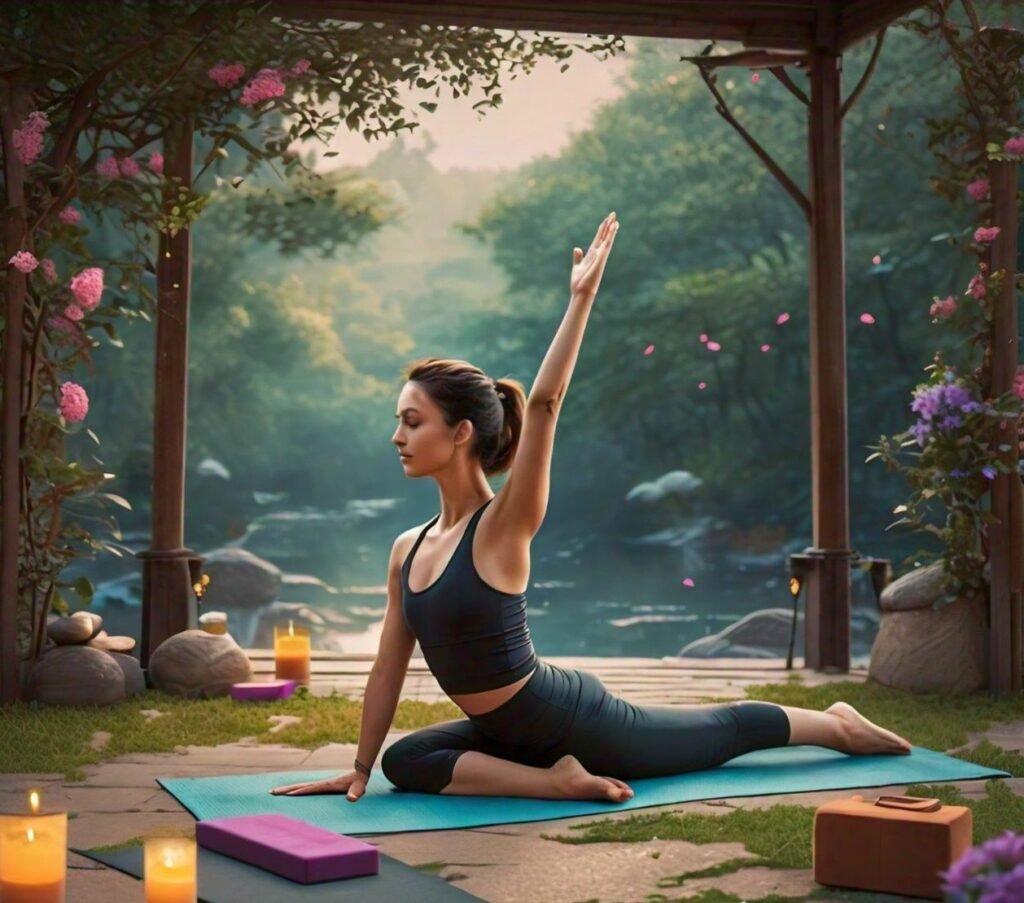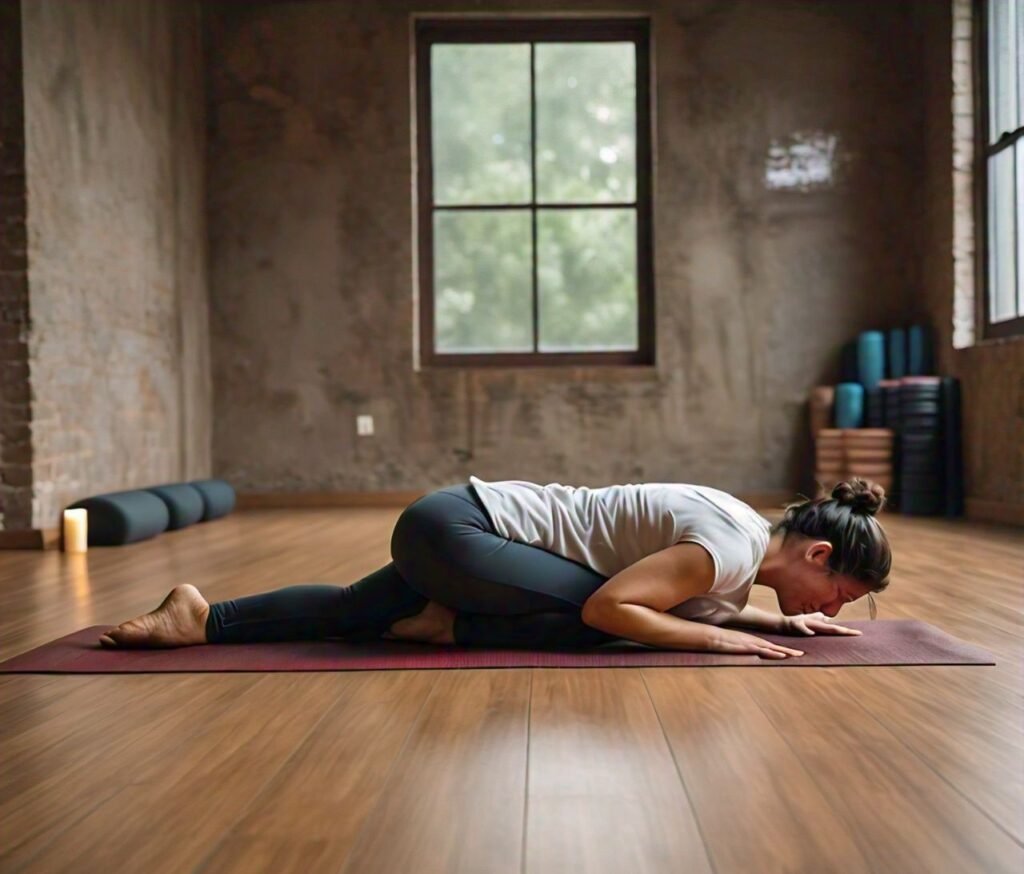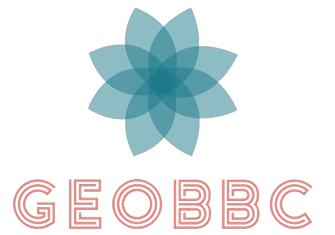Intro
Welcome to our blog, dear readers! Stress is a typical part of daily life in the fast-paced world of today. From work deadlines to personal responsibilities, it can often feel like there is no escaping it. However, with the help of yoga poses for stress relief, we can find a moment of peace and calm amidst the chaos. Whether you’re a beginner or an experienced yogi, incorporating these poses into your routine can help you combat stress and find a sense of balance. So, grab your yoga mat, and let’s explore some of the best poses for stress relief that you can try at home. With a friendly and informative approach, we’ll guide you through these creative poses and help you find your inner peace.

Why Yoga is Your Ally Against Stress
Yoga isn’t just a series of poses and stretches; it’s a pathway to tranquility that teaches us to navigate life’s turbulent waters with grace. When stress starts to take its toll, yoga steps in like a gentle friend, offering a reprieve from the mental clutter and physical tension. By intertwining breath work with movement, yoga creates a unique environment for the mind to quieten and the body to unwind. Each pose acts as a physical metaphor for releasing the grip of stress, allowing us to literally ‘let go’ of the burdens we carry. It’s this combination of mindfulness, breathing, and physical movement that makes yoga an effective tool against stress. Engaging in this ancient practice activates the body’s relaxation response, counteracting the stress-induced adrenaline rush with a wave of calmness that flows through your entire being. Through yoga, we learn not only to stretch our muscles but also to expand our capacity for coping with stress, fostering resilience and a sense of equilibrium. So, as we embark on this journey together, remember, yoga is more than an ally; it’s a sanctuary where stress melts away and serenity takes its place.
Preparing Your Mind and Space for Yoga
Before diving into the transformative world of yoga poses for stress relief, creating a serene environment both externally and internally is essential. Start by finding a quiet, comfortable space in your home where you won’t be disturbed. This could be a corner of your bedroom, a dedicated room, or any spot that feels peaceful to you. Roll out your yoga mat, dim the lights, and perhaps light a candle or two to set a calming ambiance. Aromatherapy with essential oils like lavender or chamomile can also enhance the tranquil atmosphere, preparing your senses for relaxation and focus. Internally, preparing your mind is just as important as setting up your physical space. Take a few moments to sit quietly, close your eyes, and take deep, slow breaths. Acknowledge any stress or tension you’re holding onto and set an intention to release it throughout your practice. Remind yourself that this time is a gift you’re giving to your body and mind, and that these yoga poses for stress relief are tools to help you cultivate inner peace and balance. With your space prepared and your mind centered, you’re now ready to embark on a journey through yoga that promises not just flexibility in the body but also serenity in the soul.
Child’s Pose (Balasana) for Deep Relaxation
Dive into the embrace of Child’s Pose (Balasana), a sanctuary of calm in the realm of yoga poses for stress relief. This pose, evocative of a serene return to childhood simplicity, invites you to fold forward, surrendering the weight of the world as you rest your forehead gently on the earth. By drawing your knees wide and extending your arms forward or resting them by your sides, Balasana encourages a deep, soothing stretch along your spine, hips, and shoulders—areas where stress loves to linger. As you settle into the pose, let each exhale guide you deeper into relaxation, releasing tension with every breath. The forward fold of Child’s Pose naturally facilitates a turning inward, shifting your focus away from external stressors and toward a quiet, introspective space. It’s a cocoon of comfort, allowing for a gentle release of the back and neck, further enhanced by the grounding connection with the floor. This nurturing posture not only soothes the body but also calms the mind, making it a powerful tool in your arsenal of yoga poses for stress relief. Embrace the tranquility of Balasana and let it be a reminder that sometimes, the most profound strength is found in softness and surrender.

Forward Bend (Uttanasana) to Ease the Mind
Unravel the tightness of your day with the simple elegance of the Forward Bend (Uttanasana), a cornerstone among yoga poses for stress relief. Uttanasana stands as a testament to the power of inversion and gentle surrender, guiding you to release the worries of the mind by physically inverting your world. This pose invites you to stand tall, inhale deeply, and then exhale as you fold forward from the hips, letting your head hang freely and your hands reach towards the earth or rest comfortably on your legs. The magic of Uttanasana lies in its ability to ease mental clutter by enhancing blood flow to the brain, offering a refreshing boost of oxygen and energy. As you allow gravity to gently pull you deeper into the pose, you create space in the spine and release tension held in the neck and shoulders, common areas where stress manifests physically. The act of folding forward is like a symbolic nod to letting go, encouraging not just a physical but also an emotional release of the burdens you carry. To deepen the stress-relieving effects of Uttanasana, focus on your breath. With each inhale, find length in your torso, and as you exhale, allow yourself to fold a little deeper, embracing the peace and stillness that comes with the pose. This beautiful dance of breath and movement in Uttanasana carves out a moment of tranquility in your day, reminding you that serenity is always within reach. Whether you’re taking a short break from a busy schedule or integrating Uttanasana into a longer sequence of yoga poses for stress relief, its benefits are profound. By regularly incorporating this forward bend into your practice, you welcome a sense of calm clarity, preparing you to face the rest of your day with renewed energy and a peaceful mind.
Legs-Up-The-Wall Pose (Viparita Karani) for Circulation
Transform your relaxation game with Legs-Up-The-Wall Pose (Viparita Karani), a gentle yet powerful yoga pose that enhances circulation and fosters a sense of serenity. This restorative posture involves lying on your back and extending your legs up against a wall, allowing gravity to work its magic. As your legs soar skyward, you encourage a healthier flow of blood back to the heart, which can be especially soothing after a long day on your feet or sitting at a desk. Viparita Karani is a beloved pose for its myriad benefits, not least of which is its ability to help reverse the effects of stress. By elevating your legs, you not only support your circulatory system but also offer relief to swollen ankles and tired legs. The posture invites a calming effect on the nervous system, guiding your body into a deeper state of relaxation and paving the way for stress to gently dissolve. Breathing deeply in this pose amplifies its stress-relieving properties, inviting a cooling breath to wash over you, rejuvenating your mind, body, and spirit. As you lay in Viparita Karani, let your arms rest by your sides, palms facing up, as a gesture of receptivity. Embrace the gentle stillness, allowing yourself to be supported by the earth beneath you and the wall before you. This pose is a testament to the beauty of finding calmness and circulation enhancement all in one graceful posture.
Seated Forward Bend (Paschimottanasana) for a Peaceful Stretch
Step into the world of Paschimottanasana, the Seated Forward Bend, where each fold forward is an invitation to a deeper sense of peace and a gentle unraveling of the day’s stresses. This pose, cherished for its calming effect, guides you to sit with legs extended forward, breathing in to lengthen the spine, and exhaling as you hinge at the hips, reaching your hands towards your feet or shins. It’s a beautiful journey towards touching your toes, but remember, the destination is not the goal; it’s the peaceful stretch and release along the way that counts. Paschimottanasana massages your internal organs, helping to improve digestion, and offers a stretch that spans from your calves to your hamstrings, up through your spine. Imagine each vertebrae sighing with relief as stress dissipates with every gentle pull forward. It’s a quiet moment for your mind too, as the forward bend encourages introspection and a nurturing inward focus. In this tranquil space, let your breath be your guide, inhaling to find length, and exhaling to explore depth. You’re not just stretching muscles; you’re weaving tranquility through your body, creating a tapestry of calm that blankets your being. Paschimottanasana doesn’t just offer a stretch; it’s a pathway to peacefulness, woven through the very fabric of your practice.
Corpse Pose (Savasana) for Ultimate Relaxation
Surrender to the profound stillness of Corpse Pose (Savasana), where ultimate relaxation awaits at the journey’s end of your yoga practice. Picture yourself lying flat on your back, arms at your sides with palms facing the heavens, and your feet gently falling outward. In this pose, every part of your body is invited to relax, making it the crown jewel of yoga poses for stress relief. As you settle into Savasana, allow your breath to become natural and soft, letting go of any controlled breathing patterns you’ve been maintaining. Imagine your body becoming heavier with each exhale, sinking into the earth beneath you, as if you’re melding into a state of oneness with the ground. Here, in this space of complete surrender, the mind quiets, and the body is given the freedom to absorb the benefits of your practice, healing and rejuvenating itself. Embrace the art of doing nothing in Savasana. It’s a rare invitation in our bustling lives to simply be, rather than do. Allow thoughts to come and go like clouds drifting across a sky, returning your focus to the gentle rhythm of your breath whenever you find your mind wandering. In the tranquility of Corpse Pose, you’re offered a glimpse into a serene state of being, a sacred pause that refreshes the spirit and harmonizes the soul.
Incorporating Breath Work into Your Practice
Breath work, or pranayama, is a cornerstone of yoga that magnifies its stress-relieving effects, transforming your practice from mere physical exercise into a deeply meditative experience. Think of your breath as a bridge connecting your mind, body, and spirit, guiding you into a state of profound relaxation and awareness. Starting with the simplest form, deep abdominal breathing, where you focus on filling your belly like a balloon on the inhale and gently deflating it on the exhale, can significantly enhance your calm. This practice helps regulate the nervous system, shifting from a state of stress to one of calm. Another creative and effective technique is the 4-7-8 breath, where you inhale for four counts, hold for seven, and exhale for eight. This pattern acts as a natural tranquilizer for the nervous system, slowing down the heart rate and inviting a sense of peace and stillness. Incorporating these breathing exercises at the beginning of your yoga session sets a serene tone for your practice, and weaving them throughout can help maintain a rhythm of calm. Especially when transitioning into poses known for their stress-relief benefits, syncing your movements with your breath creates a dance of tranquility that sweeps through your entire being, elevating your practice to new heights of serenity.
Tips for a Consistent Yoga Practice
Embarking on the journey of incorporating yoga poses for stress relief into your daily routine can seem daunting at first. Yet, with a sprinkle of creativity and a dash of determination, establishing a consistent yoga practice is wholly achievable. Here are a few friendly tips to help you cultivate a yoga habit that sticks, bringing you closer to a life of balance and tranquility. First, set realistic expectations for yourself. Remember, even a few minutes of yoga a day can make a significant difference in managing stress. Start small—perhaps with just one or two poses—and gradually extend your practice time as you feel more comfortable. This approach ensures your yoga journey is both enjoyable and sustainable. Next, variety is the spice of life, and this holds true for your yoga practice as well. While having a go-to sequence of yoga poses for stress relief is excellent, don’t shy away from exploring new poses or variations. This not only keeps your practice exciting but also challenges different muscle groups, enhancing the stress-relieving benefits of yoga. Furthermore, consistency is key. Make an effort to practice daily at the same time and location. This routine helps in forming a habit. Whether it’s a serene morning session to kickstart your day or a calming evening practice to unwind, find what works best for you and stick with it. Creating a dedicated yoga space in your home, no matter how small, can also signal to your mind that it’s time to focus on your practice and let go of external stressors. Lastly, be patient and kind to yourself. Some days, you might find it challenging to step onto your mat due to various reasons. That’s perfectly okay. Yoga is not just about physical poses; it’s a practice of mindfulness and self-compassion. Embrace your journey with an open heart, and remember, each pose is a step towards a more stress-free you. By weaving these tips into your approach, you’ll find that maintaining a consistent yoga practice becomes a joyful and rewarding part of your daily life, illuminating your path to stress relief and inner peace.



